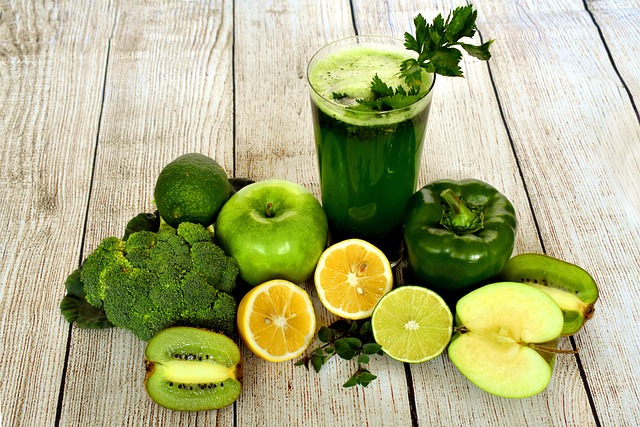When the clock strikes midnight on December 31st, people everywhere set goals that are both hopeful and ambitious. “New year, new me” is more than a phrase; it’s a promise to rewrite habits, to replace junk food with nutrient‑dense meals, and to move the body with intentionality. For many, one of the most pressing health targets is cholesterol loss. Lowering LDL and raising HDL can feel like a battle, but it is attainable with consistent, lifestyle‑based strategies that fit into the daily rhythm of life.
1. Rethink the Breakfast Plate
Breakfast is the only meal that allows you to influence the day’s metabolic trajectory. Start with a bowl of steel‑cut oats or whole‑grain porridge, topped with a handful of fresh berries and a sprinkle of ground flaxseed. Oats contain soluble fiber that binds to bile acids, encouraging the liver to use cholesterol to produce more bile. The same principle works with beans, lentils, and other legumes.
- Replace sugary cereals with oatmeal or overnight chia porridge.
- Choose natural sweeteners like stevia or raw honey over refined sugar.
- Add a small portion of nuts for healthy fats and satiety.
Why It Matters
By incorporating soluble fiber early, you give your body a head start on cholesterol reduction. The fiber traps cholesterol during digestion, forcing your body to use stored cholesterol to replenish bile acids. Over time, this subtle shift can translate into measurable drops in LDL levels.
“In the first hours after waking, the body is most receptive to nutrient changes,” explains Dr. Lila Hernandez, a nutritionist who has worked with over 200 clients on heart‑healthy diets.
2. Swap Saturated Fats for Heart‑Friendly Alternatives
Our culinary habits often revolve around butter, cream, and fatty cuts of meat. These saturated fats can raise LDL cholesterol. A simple swap—using olive oil or avocado oil in place of butter, opting for skinless poultry or plant‑based proteins, and limiting red meat to one serving per week—can produce significant improvement.
Introduce monounsaturated fats found in olives, almonds, and avocados. They help raise HDL, the “good” cholesterol, while maintaining the body’s need for essential fatty acids.
Plant‑Based Protein Power
Replacing even a single meat meal with legumes or tofu can reduce cholesterol levels. The protein sources are low in saturated fat and high in fiber, which is a double‑edged sword against cholesterol. Experiment with lentil soups, chickpea salads, and tofu stir‑fries. Pair them with colorful vegetables to keep the palate excited.
- Sunday: Lentil curry with brown rice.
- Wednesday: Tofu and vegetable stir‑fry.
- Friday: Chickpea and quinoa salad.
3. Keep a “Meat Diary” to Track Portions
Many people underestimate how often they consume meat. By keeping a brief record—just a note on a phone or a small journal—of each time you eat meat, you become more aware of your habits. Notice the size of the portion and the type of meat chosen. Over time, you’ll naturally reduce intake as the habit of tracking fosters mindful decisions.
Start by noting the first five meals that contain meat. Then set a target: reduce the total number of meat meals by 20% in the first month. The mental commitment alone can spark positive change.
Mindful Eating Tips
When you notice the urge to add extra butter or cheese, pause and ask yourself if the food adds nutritional value or just calories. Slow down your eating pace, chew thoroughly, and savor the flavors. A mindful approach helps you recognize fullness cues and prevents overeating, which indirectly supports cholesterol loss.
4. Incorporate Regular Physical Activity
Exercise isn’t just about burning calories; it also positively influences lipid profiles. Aerobic workouts—such as brisk walking, cycling, or swimming—boost HDL while lowering LDL. Resistance training can improve insulin sensitivity, indirectly aiding cholesterol regulation.
Begin with manageable goals: 30 minutes of moderate activity five days a week. As fitness improves, consider adding strength training twice a week.
Sample Weekly Routine
- Monday: 30‑minute jog.
- Tuesday: Strength training (bodyweight circuit).
- Wednesday: Rest or gentle yoga.
- Thursday: 45‑minute bike ride.
- Friday: Strength training (dumbbells).
- Saturday: 60‑minute hike.
- Sunday: Rest.
5. Focus on Soluble Fiber Sources
Beyond oats and legumes, other foods rich in soluble fiber—such as apples, carrots, Brussels sprouts, and psyllium husk—are powerful allies. Aim for at least 25–30 grams of fiber per day, split evenly between soluble and insoluble types.
When planning meals, consider the fiber content. For example, a breakfast smoothie with an apple, a handful of spinach, and a tablespoon of ground flaxseed adds both soluble fiber and a nutrient boost.
Daily Fiber Checklist
- Oats for breakfast.
- Two servings of beans in lunch and dinner.
- An apple or pear as an afternoon snack.
- Steamed carrots or Brussels sprouts with dinner.
6. Reduce Trans Fats and Hidden Cholesterol
Trans fats, often found in processed baked goods and fried foods, are notorious for raising LDL. Many packaged foods also contain hidden cholesterol from additives. When shopping, read labels carefully: avoid anything containing partially hydrogenated oils, and look for the word “cholesterol” in the ingredients list.
When dining out, request grilled or baked dishes instead of fried or cream‑based options. Simple substitutions can keep your cholesterol loss trajectory steady.
Label‑Reading Checklist
- Check for “trans fat” per serving; ideally 0g.
- Choose items with < 5g total fat per serving.
- Opt for foods with < 1g saturated fat per serving.
7. Add Antioxidant‑Rich Foods to Your Plate
Oxidative stress can worsen cholesterol damage. Foods high in antioxidants—like berries, dark leafy greens, and green tea—help protect the body. Incorporating these foods can support overall cardiovascular health and reinforce the benefits of cholesterol loss.
Experiment with a berry smoothie at lunch, a kale salad at dinner, and a cup of green tea after dinner. The ritual of sipping green tea can also serve as a mindful pause that keeps you from impulsively snacking.
Antioxidant‑Rich Food Pairings
- Blueberries + Greek yogurt.
- Spinach + lemon vinaigrette.
- Dark chocolate (70% cocoa) as a sweet treat.
Putting It All Together: A Sample Day for Cholesterol Loss
Breakfast: Steel‑cut oats topped with sliced banana, chia seeds, and a drizzle of honey. A cup of black coffee.
Mid‑morning snack: An apple with a handful of almonds.
Lunch: Lentil soup, mixed greens, cherry tomatoes, cucumber, and a vinaigrette made with extra‑virgin olive oil.
Afternoon activity: 20‑minute brisk walk.
Snack: Greek yogurt with fresh berries.
Dinner: Grilled skinless chicken breast, quinoa, and steamed Brussels sprouts. A side of green tea.
Evening: 15‑minute meditation or gentle stretching to wind down.
Tracking Progress and Staying Motivated
Set realistic milestones: a 5% drop in LDL after 3 months, followed by a 10% drop at 6 months. Use a simple chart or a free app to log cholesterol readings from your annual check‑up. Celebrate small wins—like swapping out a sugary breakfast for oats—and share progress with friends or family who support your resolution.
Remember, lifestyle changes are a marathon, not a sprint. Consistency, patience, and a willingness to tweak your approach as you learn what works for your body are the keys to sustainable cholesterol loss.
Conclusion: The New Year Is Your Canvas
“New year, new me” isn’t just a slogan; it’s an invitation to sculpt a healthier, more vibrant self. By integrating heart‑healthy foods, mindful eating, regular movement, and a dash of antioxidant support, you create a synergistic environment for cholesterol loss. The journey may involve small adjustments, but the payoff—a healthier heart, clearer mind, and increased vitality—is immeasurable. Here’s to a year of better choices, brighter health, and a renewed you.


